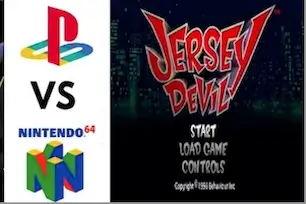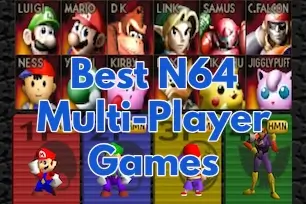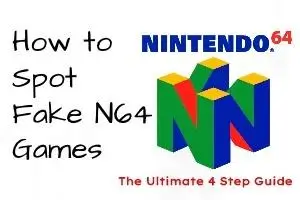Although a few new games can be exciting, they don't quite match the thrill of a new console release. Given that the 2020s aren't providing that type of excitement, I decided to look back at past console launches.
Today, I bring you retro Launch Wars: The Fifth Generation. To recap, the main consoles of the fifth generation in the gaming industry included the PlayStation, the Nintendo 64, and the Sega Saturn.
🕹️ “Having seen both consoles launch in real time, I can say few gaming eras were as exciting as the 1995–96 console wars.”
– Brandon, Retro Gaming Historian -- The Old School Game Vault
Key Takeaways from this Article:
- ✅ PS1 had more launch games and long-term support
- ✅ N64 had stronger first-party hits and 4-player local play
- ✅ PS1’s disc format allowed for larger, deeper games
- ✅ In the 2020s, N64 offers more casual replayability
- In this article, we are going to analyze the PS1 vs the N64 (sorry 32-bit Sega Saturn fans).
The Table of Contents
So, when did the ps1 come out & when did n64 come out?
- The Original ps1 release date was on September 9, 1995, in North America.
- The n64 release date was on September 29, 1996, in North America.
PS1 vs N64: Comparing Launch Titles & Holiday Lineups
This is, in my opinion, the toughest console launch decision of all time. Nintendo had the track record, experience, and fan loyalty, and it had not yet doubled down on its identity as a family-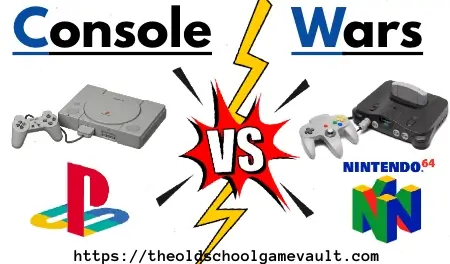 fun console, so some of its best games were (relatively) mature titles like GoldenEye 007 and Turok: Dinosaur Hunter.
fun console, so some of its best games were (relatively) mature titles like GoldenEye 007 and Turok: Dinosaur Hunter.
Sony was breaking into the console market and beginning the trend of non-Nintendo consoles going after a more mature audience, alongside (and later in preference to) the family/kid’s market.
During this generation, the leading consoles offered fantastic children's games and a superb selection of titles. Technology has advanced, allowing mature games to explore more complex themes, tell longer stories, and showcase artistic qualities. They can also include elements like violence and gore.
We wrote another article titled super nintendo vs nintendo 64 RPGS. Here we argued that PlayStation had an advantage because it could store more information on CD-based games.
Making the decision tougher was the fact that this was still the Age of Exclusives. There were cross-system games, of course, but single-console titles were plentiful rather than being the exceptions they are today.
One-system gamers were denied access to a lot of great games that only existed on the other system. History has shown that both systems are great choices with a wonderful range of games. However, when they first launched, we didn't know this. So, during the holiday seasons of 1995 and 1996, we faced the tough choice of which one to pick.
What Games Did PS1 and N64 Offer at Launch?
To see what kind of choices the gamers of the mid-90s were faced with, let's look at the titles that were released for each system during the first holiday system after launch.
We will also look at games that are released by March of the next year. Many players who got a console during the holidays likely expected at least one new game in the months ahead.
A surprising number of PS1 games (many of them good, many more not-so-good) were released in 1995.
PS1 Launch titles included:
- Battle Arena Toshinden
- Air Combat
- NBA Jam Tournament Edition
By Christmas these had been joined by X-COM: UFO Defense, Twisted Metal, Tekken, Gex, Road Rash, and FIFA Soccer 96. March 1996 saw the landmark release of Resident Evil, ensuring that PlayStation owners were happy with their purchases.
The Nintendo 64 didn't release as many games in its first months. There was still a nice selection of games with strong sales, tempting holiday shoppers in 1996.
N64 Launch Titles Only Included Two Games:
- Super Mario 64
- Pilotwings 64.
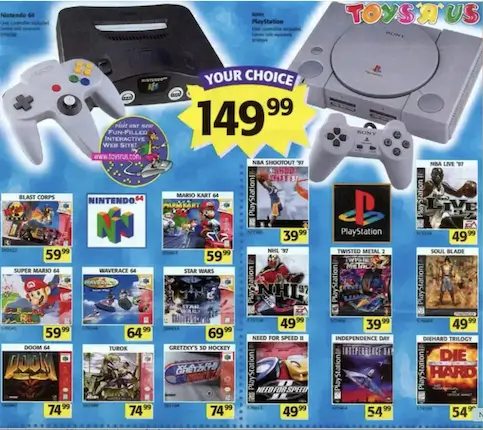
By Christmas, you could find Wave Race 64 and Wayne Gretzky's 3D Hockey for sale. Also, early rare fighter Killer Instinct Gold was available.
In early 1997, the N64 started to shine. It welcomed classic games like Rare's unique Blast Corps and Turok: Dinosaur Hunter. It also added some lesser-known titles like NBA Hangtime and Doom 64.
A couple of months later, two more classic N64 titles were released: Star Fox 64 in July and GoldenEye 007 in August. However, I don't think we knew about their release during Holiday '96, so I can't honestly include them in this Holiday Showdown. (But I also can't mention them at all because they're so good.)
The best solution would have been to get a PS1 during the 1995 holiday season and an N64 in 1996. But for those of us who aren't (or weren't in the mid-90s) in a position to buy all consoles at retail prices, a choice had to be made.
Aside from game library differences, it should also be pointed out that the PS1 supported two controllers (in base form and for most games, anyway) where the N64 supported four, giving the N64 the edge in local multiplayer games …or, as we called it on consoles in 1996, “multiplayer.”
It should also be noted that the Retail Price of Each Console
- The Nintendo 64 retail price was at $200
- The Play Station 1 had a retail price at $300
(which made a lot of kids Nintendo players by parental default).
Launch Verdict: Which Console Had the Stronger Start?
At the launch of the console, things were different. This period is not the same as the entire life of the console, which leads to a different debate about the console wars. I must go with the N64 Launch Titles over the PS1 Launch Titles. While the PS1 boasted a larger library, the N64 games from its early days that continue to bring me joy are Super Mario 64, Mario Kart 64, and Blast Corps.
Battle Arena Toshinden and Twisted Metal were cool, but their appeal faded quicker, and the system's true legacy was still a year or two away. With defining titles like Final Fantasy VII, Metal Gear Solid, and Crash Bandicoot leading the way.
These were the kinds of deep, story-driven experiences that helped shape the greatest RPGs and iconic hits of the PS1 era — games the cartridge-based N64 couldn’t easily match.
For a launch system, I would suggest the N64. I would recommend that gamers buy a PS1 two or three years later when the price drops and better games start to come out.
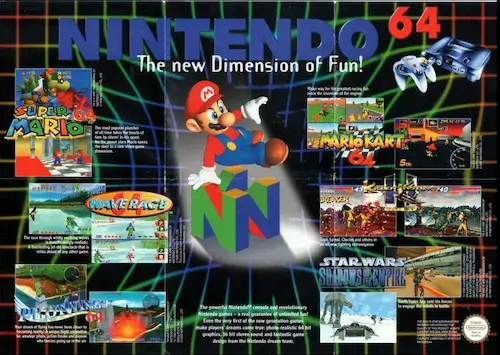
Long-Term Legacy: PS1 vs N64 Game Libraries Compared
Perhaps the most obvious advantage of the PlayStation over its whole lifespan is the depth of its game library. While only about 296 North American games were released for the N64, the PlayStation One offered over 1,200 titles (in North America).
To put this in context, the PS1’s library was impressively large for its era, while the N64’s was small even by the standards of the previous generation. The fourth-gen SNES had featured 784 games, for instance, while its main competitor, the Sega Genesis, had more than 900 games.
The sixth-generation consoles showed a clear difference between Nintendo and PlayStation. The GameCube had 646 games, while the PS2 had over 2,000 games.
The Xbox, meanwhile, had 986 and even the ill-fated Dreamcast had 720. Quantity isn't everything, but it does matter. The larger selection of quality PlayStation One games gives it an advantage in this area.
Speaking of variety
The PlayStation 1 also wins in third-party support. This has been a classic flaw for Nintendo systems ever since the great video gaming crash of 1983, when a glut of terrible third-party games helped wreck the console industry for years until the NES revived it.
Scared away from third-party licensing by that horrible time, Nintendo has been less friendly to third-party developing than its younger competitors (who didn’t live through ’83) ever since.
Unfortunately, this became more of a weakness
Then a strength as the console gaming industry matured, and quality third-party games became a major selling point for consoles—Nintendo certainly has third-party games (as the onslaught ofcrap titles for the Wii made quite clear) but they’re not as good as their competitors at working with the best developers to get the best third-party games.
Nintendo was relying instead on terrific first-party titles like Mario and The Legend of Zelda titles, during the N64 era, on the incredible second-party work of Rare (GoldenEye 007, Perfect Dark, Donkey Kong 64, Blast Corps, Diddy Kong Racing, Banjo-Kazooie, Conker’s Bad Fur Day).
This list of Rare-developed N64 games points out what is perhaps the N64’s crowning glory
The sheer number of classics. The last cartridge-based console had so many. Aside from Rare’s, named above, there are the defining first-party games Super Mario 64, Mario Kart 64, The Legend of Zelda: The Ocarina of Time and Majora’s Mask, Mario Party, Star Fox 64, and of course Super Smash Bros. (I’ll put Pokémon Stadium and Pokémon Snap on this list, as honorary first-party games, too).
The PlayStation provided many different ideas about console gaming. However, the N64 shows why Nintendo has stayed successful for so long. Their top games are still loved today. I know a lot more people who sit down in the 2020s to play an N64 game than who replay a good PS1 game.
Like great movies, the gameplay of Nintendo’s top-shelf first- and second-party titles stays fun even three decades on, because these games are just so Well, Made.

Technical Comparison: PS1 vs N64 Specs and Format
On the other hand, as the fifth generation got deeper into its life cycle, the PlayStation 1 began to pull ahead by virtue of being an optical-disc-based system. Around 650 MB of data could fit on a PlayStation 1 optical disc, as opposed to around 64 MB on an N64 cartridge.
Many later PS1 games even expanded on that by using multiple discs (oh the joy of opening Final Fantasy VIII and seeing FOUR discs there…).
This helped developers create longer and more complex games as they became familiar with making games for the PS1. In contrast, later N64 games faced strict limits on storage, which restricted how much they could expand their games.
PS1 vs N64 Graphics: Discs, Cartridges, and FMV
The PS1 gets the nod in terms of graphics too. A big reason for this is that later PS1 games could surpass later N64 games. This is especially true because they included real full motion video.
Discs over cartridges also gave the PlayStation 1 the ultimate price advantage, for while the PS1 was $100 more expensive (at $300), games cost on average $10 less than for the N64 because cartridges cost more to produce, so once you’ve bought your 11th game, the PS1 was the cheaper console to play on.
This earlier foray into disc-based gaming also meant that the PS1 was paving the way of the future, making third-party developers more comfortable with their processes and giving them an edge moving into future console generations, too.
On the other hand
The Nintendo 64 Introduced a multiplayer mode for up to four players. In an era of local-only console gaming, this was huge. The PS1 simply could. Not. Compete. With something like GoldenEye 007 multiplayer.
I know people who still play 007 multiplayer on a weekly basis today. In this and in the gaming library, the N64 was (and is) more attractive to casual and social gaming.
I know a lot of people who are a bit overwhelmed by the complexity of today’s (non-Nintendo) game consoles, but most of them are comfortable with a ready to play an N64 (or a Switch, for that matter) in an instant. This is Nintendo’s bread and butter, and the N64 did (and does) a great job inviting people who don’t consider themselves gamers to sit down and play (as did the lower up-front investment in hardware, at only $200).
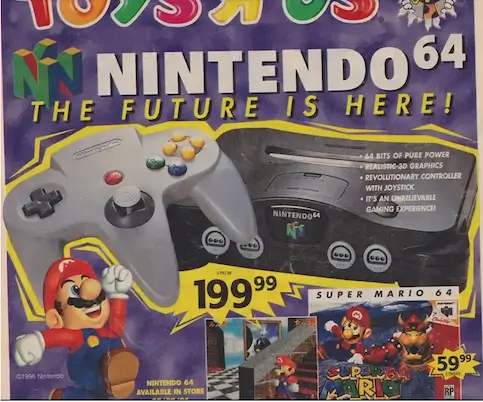
Also, in the N64’s favor are the faster load times that came with cartridge
(rather than disc) gaming. In conclusion, the lasting appeal of the N64 lies in its replay value,which remains enjoyable even now. This is something that not as many PS1 games can offer.
So, in the end, which is better N64 or PS1
For me, it depends on when you’re deciding. If you can choose just one console from the fifth generation, which ran from the mid-90s to the early 2000s, I suggest getting a PS1. The variety of great games, the depth, the cutting-edge tech made it a system of the future and the system that taught me that video games could be more than just entertainment—they could be as meaningful and moving as movies or books (I’m looking at you, Final Fantasy VII).
But if the question is which system to pick up now, in the 2020s PS1 or N64
👉 Want to dive deeper into the N64 experience? Check out our Complete N64 Console Buying Guide.
To give some retro gaming a go, I’d tell you to get a Nintendo 64. Many N64 games are still enjoyable many years after they first came out. This is mainly because they depend less on 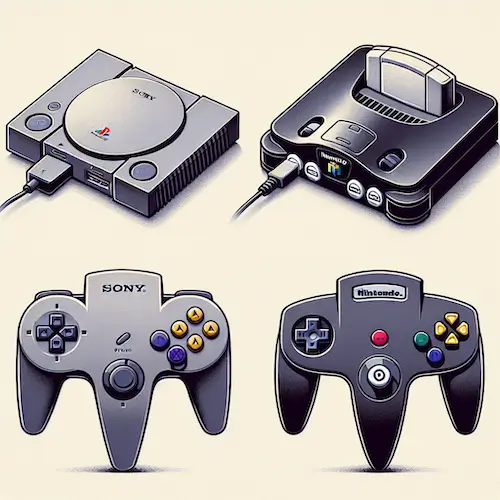 advanced technology and more on solid gameplay. They focus on being fun instead of just using the latest tech.
advanced technology and more on solid gameplay. They focus on being fun instead of just using the latest tech.
This may also be because N64 games tend to be shorter, I tend to want a pick-up-and-play experience or short missions rather than a hundred-hour odyssey whose gameplay and tech specs feel dated. I can enjoy the blocky graphics of GoldenEye and still have a great time. However, I find it frustrating to play for 70 hours without using analog-stick movement in say Final Fantasy VII.
🎙️ Retro Console Verdict (Voice-Friendly):
If you’re choosing a retro console to revisit today, the Nintendo 64 still holds up. Its games are shorter, more accessible, and just plain fun—even decades later. But when it comes to depth, variety, and long-term impact, the PlayStation 1 wins the legacy war.
So that’s our verdict:
The PlayStation 1 as the system of its time, but the Nintendo 64 as having eroded less since. What do you think?
It's been a couple of years since the release of the PS5 and Xbox Series X, and the Nintendo Switch release. Which has brought the video game industry fully into the eighth generation of console gaming. The current generation of gaming consoles is focused on exclusive games, price differences, and online gaming features.
Which is fine, anyone looking to buy a video game console this year will have more games and better prices (and fewer bugs) than last year's early adopters.
Console Wars: FAQ's About PS1 vs N64
What were the launch prices of the PS1 and N64?
- The original PlayStation launched at $299 in North America, while the Nintendo 64 was priced more affordably at $199.
Which console had more games, the PS1 or N64?
- The PS1 had over 1,200 North American titles, while the N64 had just under 300 — giving the PS1 a much larger game library.
Why did the PS1 use discs while the N64 used cartridges?
- Sony opted for CDs to lower production costs and allow for larger games. Nintendo stuck with cartridges to reduce load times and limit piracy.
Which console is better for retro gaming today?
- The N64 is better for local multiplayer and casual play, while the PS1 is ideal for deep RPGs and cinematic storytelling.
Did the Nintendo 64 have better graphics than the PlayStation?
- Technically, the N64 had more advanced hardware. However, PS1 games often looked better due to higher storage capacity and FMV cutscenes enabled by CD technology.




